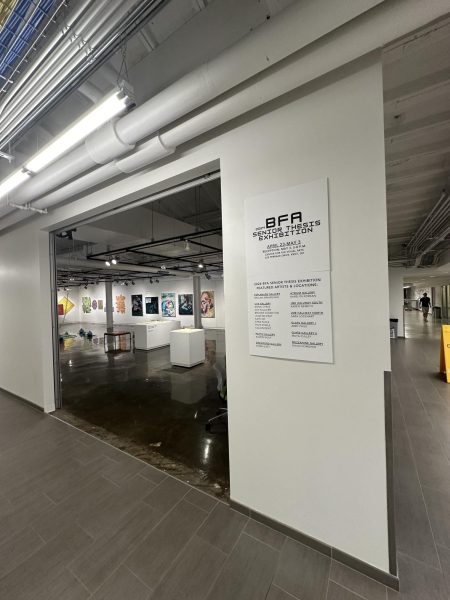Immigration lawyers struggle to navigate return-to-Mexico policy
People attempting to cross in the US look on as the San Ysidro port of entry stands closed at the U.S.-Mexico border on November 25, 2018 in Tijuana, Mexico.
March 31, 2019
(CNN) — The Trump administration’s policy of requiring some asylum seekers to stay in Mexico for the duration of their immigration hearing is spurring confusion among migrants and immigration lawyers who are trying to represent them.
Immigration lawyers have been scrambling to get answers to questions about the Migrant Protection Protocols program, informally known as “Remain in Mexico,” and in the process, confronting a host of logistical challenges, given that would-be clients are expected to stay outside the United States.
The concerns shared by immigration lawyers span the gamut from how to communicate with asylum seekers, many of whom are staying in shelters in Tijuana, Mexico, to whether attorneys can practice law in another country for profit to how, generally, these cases might differ from other asylum-seeker cases. In some scenarios, the uncertainty behind the program has led to lawyers turning down cases.
“Some attorneys are afraid to do consultations,” said Andrew Nietor, an immigration attorney based in San Diego who has already turned down two cases. Some lawyers in the region travel to and from Mexico and are nervous their passport will get flagged for doing work in Mexico without a proper work visa, he said.
Legal representation is often critical to the success of a case. Immigration courts fall under the Department of Justice and have different rules and rights. Immigrants, for example, have the right to counsel, but unlike in the criminal justice system, representation is not guaranteed.
President Donald Trump has repeatedly denounced the nation’s immigration system and recently appeared to mock and question the legitimacy of asylum claims. The so-called Remain-in-Mexico policy was initiated at the San Ysidro port of entry in San Diego and has since expanded to other parts of the border. As of March 12, the US has returned 240 migrants to Mexico, according to the Department of Homeland Security.
This month, the hearings of asylum seekers who fall under the protocols began in the San Diego immigration court, roughly 18 miles from the port of entry, and while some did have legal representation, others did not.
Jewish Family Service of San Diego, a nonprofit organization that provides some legal assistance to immigrants, has been periodically sending some attorneys to Tijuana to meet with asylum seekers. The amount of time spent planning visits across the border, as well as identifying places to meet with clients, who have no place of their own, has limited its capacity.
“It’s not sustainable. As soon as we start getting into the throws of representation… we’ll be unable to continue facilitating legal consultation,” said Leah Chavarria, the group’s senior immigration attorney, who said the organization will likely not be able to take more than five cases.
“It’s at the sacrifice of other work as well,” she added. “There are so many unknowns with the MPP program.”
Research has underscored the significance of access to counsel for immigrants. According to a 2016 report by the American Immigration Council, represented immigrants were more likely to apply for relief from deportation and obtain that relief. Still, only 37% of immigrants nationwide had obtained legal representation in their removal cases.
The report notes that it’s harder for immigrants in detention to acquire counsel. And to some degree, those same obstacles face asylum seekers staying in Mexico for the duration of their hearings.
“One thing that could be likened to those that are in immigration detention or immigration incarceration is that the communication is very difficult,” Chavarria said. “We can’t pick up the phone and call our clients who are in immigration incarceration. And that’s proving to be similar to those in the MPP program.”
There’s an added layer of complication since many asylum seekers in Mexico either don’t have cellphones or if they do, can’t afford to make international calls. For lawyers, it’s also difficult to find a place to meet in Tijuana where they can have private conversations with their clients — a necessity given the sensitive nature of much of their cases.
All of this is an impediment to asylum seekers who fall under the program and lawyers who might consider representing them. Cases, after all, take dozens of hours to comb through documents, discuss the case, engage in conversations with family and friends, who might be witness to an incident that led to an individual fleeing, and walk through the immigration court system.
“When they flee persecution… they don’t flee with a neat binder of documents,” Nietor said. It’s incumbent on the lawyers to work with asylum seekers to obtain all the necessary records and testimonies, as well as gather additional data to corroborate a claim.
The obstacles toward obtaining counsel are apparent to some asylum seekers, who acknowledged them during their master calendar hearings, the first hearing in removal proceedings, in the San Diego immigration court earlier this month.
In one case, a man seeking asylum who did not have a lawyer said he had been given a list of legal service providers by the government but had trouble understanding it.
“I was confused,” he told Judge Scott Simpson. “I don’t know how to read and write. It becomes difficult.”
He added: “In Mexico, it’s even more complicated. It’s more complicated than if I were here.”
“I understand it’s more difficult,” Simpson replied. “It’s not lost on me.”
The-CNN-Wire
™ & © 2019 Cable News Network, Inc., a Time Warner Company. All rights reserved.























